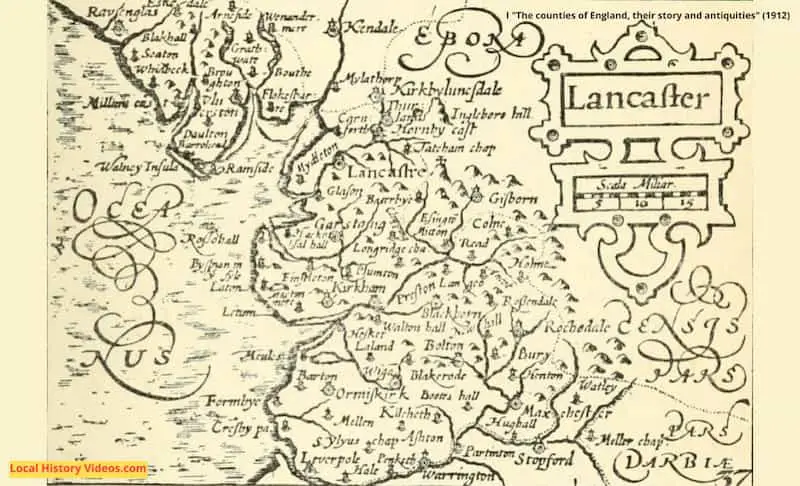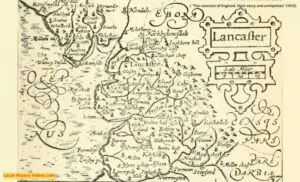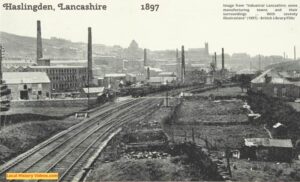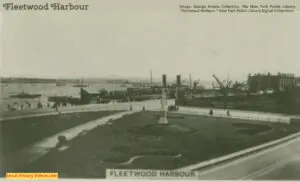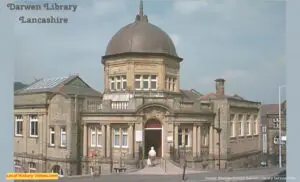Glimpse history through old images of Skelmersdale, Lancashire, in North West England, UK.
In 1961, the Government allocated 4,200 acres of land for the building of the new town. 10,000 people living in two small villages and a collection of countryside homes suddenly found themselves about to be replaced by a new industrial town with an anticipated population of 80,000 residents.
Skelmersdale in 1971
This introduction to Skelmerdale’s creation as a new town includes the original planning team, the different housing estates, the reasons for its location and designs, and scenes of everyday life.
It talks of ’10 years ago’ being 1961, hence it was probably recorded in 1971.
There’s an interesting interview with Russell Milligan, the housing manager. The only requirement families had to meet to be allocated a home in one of Skelmerdale’s estates was that they were living in a prescribed area of Liverpool. He refutes the old jokes about people keeping coals in the bath, saying their tenants maintain the houses in a good condition and that vandalism in the town is low.
He says they have a wide range of houses up to seven bedrooms, and even considered knocking two homes into one to provide for a family of 19.
The two men discuss how the dining area within the kitchen is a surpringly popular arrangement; this is clearly a new idea in modern living arrangements. There’s a downstairs toilet.
In the living room, furniture is placed so prospective tenants get an idea of the cost of funrishing these rooms. The ground floor has plastic carpet tiles laid, to save the expense of expensive carpets.
There are fitted wardrobes, an extraction fan in the bathroom, a tree planted in each garden, and an oil fired central heating system for 21 degrees in the living room and thermostats.
Official government policy was that about half the town would be owner occupied.
People were supposed to get a job in Skelmersdale and then move into a home there. But since housebuilding took off earlier, some tenants got permission to live there and travel to Liverpool for work.
By the time of this film, more than 60 companies had set up in the town. There were large factories available to rent, along with nursery factories for small family firms.
Norman Pritchard, the Social Development Officer, explains that each area will have a small meeting room for families parties, social groups, bingo, meetings etc. The Carnegie trustees contributed towards a big expansion to the Quarry Bank stone house so it could expand the community activities taking place there.
Skelmersdale Ecumenical Centre was a place of worship, study and meeting shared by five different denominations.
The Concord Shopping Centre was planned, but construction work was only just starting on the empty site.
35% of the population was under the age of 15. Schools and their facilities, including the swimming pool and two arts theatres, were used by pupils during the day, and by the local community during the evenings and school holidays.
The Sports Centre was created by modifying a contractor’s building. Each week, 1800 people paid 10p to access activties at the centre.
The second half of this video is ‘Grow with Skelmerdale’ which can be watched separately below if you are pressed for time.
Project Skelmersdale – Fanny Leroux Time on YouTube
Skelmersdale in 1977
When the Skelmersdale Development Corporation recorded footage of the town’s people and places in 1977, the emphasis was on the manufacturing industry. In what had been green fields just ten years earlier, workers were now creating everything from clothing, to watches and food in huge factories.
Keith Bloor drove from his factory to his modern family home rented from the corporation, where he lived with his three children. They could use the walkways to get to school without crossing busy roads.
The school’s foreign language equipment was very advanced for the age, and there were many other aspects of the school’s facilities and equipment which would not have been common around the uk.
At home, Lynne Bloor’s kitchen was also well equipped. The highlight on her electric over, stainless steel kettle and tea service, Kenwood Cheffette food mixer, medium sized fridge freezer, dishwasher, and washing machine, may appear ordinary items to most of us today. But in 1977, many of these apirational items would have been beyond the reach of a householder living on a factory worker’s wage. And of course they had a car, too, suggesting their rent was low.
The film talks about the large range of pleasant homes available to rent from the corporation, from one bedroom flats to family homes, with no mention of long housing waiting lists.
The shops were apparently designed for Mrs Bloor’s convenience, with corner shops, parade of shops, the Concourse Shopping Centre which included the Presto supermarket, and the indoor market.
Sports and leisure ranged from swimming and football, squash and chess, darts and drinking, golf and bowles, dencing and hockey, cricket and flower arranging, music and singing, and of course the 1970s concrete playground with a roundabout and climbing frame which were all later removed for being dangerous.
Grow with Skelmersdale (1977) – Merseyside Films on YouTube
More about Lancashire
- Old Images of Lancashire, England
- Old Images of Skelmersdale, Lancashire
- Old Images of Haslingden, Lancashire
- Old Images of Fleetwood, Lancashire
- Old Images of Darwen, Lancashire
More Lancashire local history resources
Back to Home page

